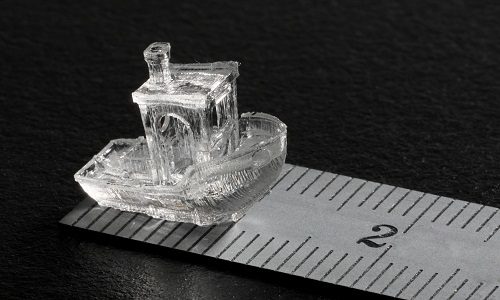In contrast to conventional 3D printing methods, the new technique helps create precise objects as small as two centimetres in length, without any breakage in structure.

Imagine being to able to create minute objects with precise accuracy and intricate detailing within a matter of seconds. Not only would it save time, but also promote the design of specific substances at a much lower cost.
Now researchers at the Ecole Polytechnique Federale de Lausanne (EPFL) have developed a new, groundbreaking 3D printing technology that can 3D-print small, soft objects with high-precision. The process takes less than 30 seconds to complete and has potential applications in a wide range of fields, such as electronics prototyping, mechanical designing and 3D bioprinting.
“Conventional 3D printing techniques, known as additive manufacturing, build parts layer by layer,” explains Damien Loterie, the CEO of Readily3D, a volumetric 3D printing company. “The problem is that soft objects made that way quickly fall apart.” What’s more, the process can be used to make delicate cell-laden scaffolds in which cells can develop in a pressure-free 3D environment. The researchers teamed up with a surgeon to test 3D-printed arteries made using the technique. “The trial results were extremely encouraging,” says Loterie.
Power of light
The new technique works on the principle of tomography, a method used mainly in medical imaging to build a model of an object based on data collected from surface scans.
Firstly, laser light was sent through a translucent liquid gel. Then, dark spots began to form in the small, spinning container until, less than half a minute later, the finished product took shape. All of this was achieved with the help of the travelling light rays – in record time.
“It’s all about the light,” explains Paul Delrot, Readily3D’s CTO. “The laser hardens the liquid through a process of polymerization. Depending on what we’re building, we use algorithms to calculate exactly where we need to aim the beams, from what angles, and at what dose.”
Ability to create big
The system is currently capable of making two-centimetre structures with a precision of 80 micrometres, about the same as the diameter of a hair strand. With time, the team aims to develop new objects that can potentially be up to 15 centimetres long.
“The process could also be used to quickly build small silicone or acrylic parts that don’t need finishing after printing,” says Christophe Moser, who heads EPFL’s Laboratory of Applied Photonics Devices (LAPD).
Besides some of the earlier mentioned applications, this technology promises to be potentially lucrative for interior designing and printing solid parts of different textures for medicine and biology, such as tissues and hearing aids.
Read the research paper in detail here







